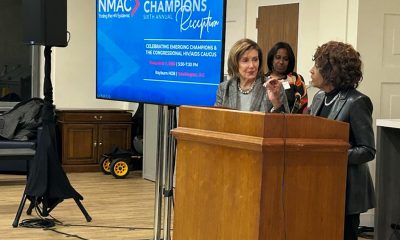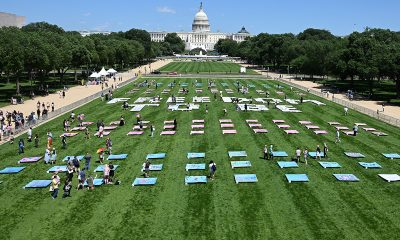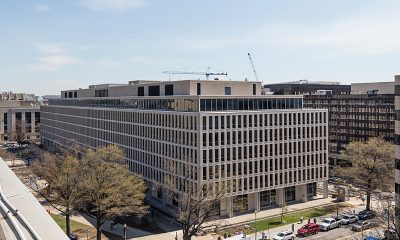Arts & Entertainment
SFGMC launches campaign to support National LGBTQ Center for the Arts
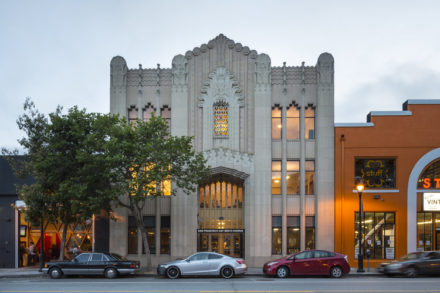
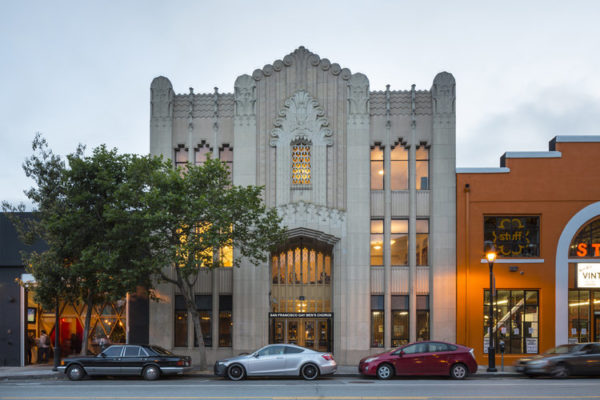
This week, the San Francisco Gay Men’s Chorus launched a public campaign to raise funds for the National LGBTQ Center for the Arts.
On Wednesday night, January 15, SFGMC announced the launch at a reception, held at the organization’s new home, a historic four-floor 1930 property near the Castro neighborhood where the chorus began four decades ago. The evening featured remarks from Mayor London Breed, California State Senator Scott Wiener, Honorary Chair Sharon Stone, SFGMC Artistic Director Dr. Timothy Seelig, Campaign Chair Edward Sell, and SFGMC Executive Director Chris Verdugo. There were also performances from members of SFGMC, San Francisco Bay Area Theatre Company, Opera Parallèle, San Francisco Philharmonic, and Oakland Interfaith Gospel Choir, along with docent-led tours of the building, and more.
According to SFGMC, the three-year, $15 million campaign “will secure and refurbish the new building and create a long-term financial foundation for SFGMC with a permanent endowment. To date, more than $9 million has been raised, with leadership gifts of $5 million from founding Chorus member Terrence Chan, $1 million from the Chorus Board of Directors, and $1 million from Zendesk Founder and CEO Mikkel Svane, along with $250,000 from the city of San Francisco and $500,000 from the state of California. The remaining $6 million will be raised through the generous support of individuals, foundations and businesses. Naming opportunities for iconic spaces within the new building include the auditorium, production studio, main lobby, second and third floor lobbies, conference rooms, offices, dressing rooms, the roof, and the building itself.”
San Francisco Mayor Breed remarked, “Creating a space for the National LGBTQ Center for the Arts and a foundation for the San Francisco Gay Men’s Chorus will help ensure these important organizations can operate for generations to come. This new space with help inspire greater advocacy through art, which, given the current political environment at the federal level, is more important than ever before.”
“As the Chorus has grown, our mission has evolved,” said Campaign Chair Sell. “Today the Chorus aspires to play a larger role, offering programming that serves the entire nation… There are few organizations like SFGMC with the history and power to unite and transform, and there has never been a more critical need for the uplifting sounds and unifying messages of SFGMC.”
Executive Director Verdugo commented, “The Arts Center will not only be SFGMC’s home, it will be home to countless artists and arts organizations nationwide who often find it a challenge to merely exist, much less have a physical space…As pioneers of the LGBTQ choral movement, we will inspire and challenge the next generation of leaders and creators to create art that not only keeps our stories alive, but moves us all forward as one collective human community.”
SFGMC purchased the National LGBTQ Center for the Arts in April 2019. The organization plans “to expand and enhance its leadership role by opening the building to composers, librettists, choreographers, and other performing artists as an incubator and workshop space for the creation of new works and collaborations.”
Additional details about SFGMC’s upcoming plans for the Center will be announced on January 21.
Movies
‘Hedda’ brings queer visibility to Golden Globes
Tessa Thompson up for Best Actress for new take on Ibsen classic

The 83rd annual Golden Globes awards are set for Sunday (CBS, 8 p.m. EST). One of the many bright spots this awards season is “Hedda,” a unique LGBTQ version of the classic Henrik Ibsen story, “Hedda Gabler,” starring powerhouses Nina Hoss, Tessa Thompson and Imogen Poots. A modern reinterpretation of a timeless story, the film and its cast have already received several nominations this awards season, including a Globes nod for Best Actress for Thompson.
Writer/director Nia DaCosta was fascinated by Ibsen’s play and the enigmatic character of the deeply complex Hedda, who in the original, is stuck in a marriage she doesn’t want, and still is drawn to her former lover, Eilert.
But in DaCosta’s adaptation, there’s a fundamental difference: Eilert is being played by Hoss, and is now named Eileen.
“That name change adds this element of queerness to the story as well,” said DaCosta at a recent Golden Globes press event. “And although some people read the original play as Hedda being queer, which I find interesting, which I didn’t necessarily…it was a side effect in my movie that everyone was queer once I changed Eilert to a woman.”
She added: “But it still, for me, stayed true to the original because I was staying true to all the themes and the feelings and the sort of muckiness that I love so much about the original work.”
Thompson, who is bisexual, enjoyed playing this new version of Hedda, noting that the queer love storyline gave the film “a whole lot of knockoff effects.”
“But I think more than that, I think fundamentally something that it does is give Hedda a real foil. Another woman who’s in the world who’s making very different choices. And I think this is a film that wants to explore that piece more than Ibsen’s.”
DaCosta making it a queer story “made that kind of jump off the page and get under my skin in a way that felt really immediate,” Thompson acknowledged.
“It wants to explore sort of pathways to personhood and gaining sort of agency over one’s life. In the original piece, you have Hedda saying, ‘for once, I want to be in control of a man’s destiny,’” said Thompson.
“And I think in our piece, you see a woman struggling with trying to be in control of her own. And I thought that sort of mind, what is in the original material, but made it just, for me, make sense as a modern woman now.”
It is because of Hedda’s jealousy and envy of Eileen and her new girlfriend (Poots) that we see the character make impulsive moves.
“I think to a modern sensibility, the idea of a woman being quite jealous of another woman and acting out on that is really something that there’s not a lot of patience or grace for that in the world that we live in now,” said Thompson.
“Which I appreciate. But I do think there is something really generative. What I discovered with playing Hedda is, if it’s not left unchecked, there’s something very generative about feelings like envy and jealousy, because they point us in the direction of self. They help us understand the kind of lives that we want to live.”
Hoss actually played Hedda on stage in Berlin for several years previously.
“When I read the script, I was so surprised and mesmerized by what this decision did that there’s an Eileen instead of an Ejlert Lovborg,” said Hoss. “I was so drawn to this woman immediately.”
The deep love that is still there between Hedda and Eileen was immediately evident, as soon as the characters meet onscreen.
“If she is able to have this emotion with Eileen’s eyes, I think she isn’t yet because she doesn’t want to be vulnerable,” said Hoss. “So she doesn’t allow herself to feel that because then she could get hurt. And that’s something Eileen never got through to. So that’s the deep sadness within Eileen that she couldn’t make her feel the love, but at least these two when they meet, you feel like, ‘Oh my God, it’s not yet done with those two.’’’
Onscreen and offscreen, Thompson and Hoss loved working with each other.
“She did such great, strong choices…I looked at her transforming, which was somewhat mesmerizing, and she was really dangerous,” Hoss enthused. “It’s like when she was Hedda, I was a little bit like, but on the other hand, of course, fascinated. And that’s the thing that these humans have that are slightly dangerous. They’re also very fascinating.”
Hoss said that’s what drew Eileen to Hedda.
“I think both women want to change each other, but actually how they are is what attracts them to each other. And they’re very complimentary in that sense. So they would make up a great couple, I would believe. But the way they are right now, they’re just not good for each other. So in a way, that’s what we were talking about. I think we thought, ‘well, the background story must have been something like a chaotic, wonderful, just exploring for the first time, being in love, being out of society, doing something slightly dangerous, hidden, and then not so hidden because they would enter the Bohemian world where it was kind of okay to be queer and to celebrate yourself and to explore it.’”
But up to a certain point, because Eileen started working and was really after, ‘This is what I want to do. I want to publish, I want to become someone in the academic world,’” noted Hoss.
Poots has had her hands full playing Eileen’s love interest as she also starred in the complicated drama, “The Chronology of Water” (based on the memoir by Lydia Yuknavitch and directed by queer actress Kristen Stewart).
“Because the character in ‘Hedda’ is the only person in that triptych of women who’s acting on her impulses, despite the fact she’s incredibly, seemingly fragile, she’s the only one who has the ability to move through cowardice,” Poots acknowledged. “And that’s an interesting thing.”
Arts & Entertainment
2026 Most Eligible LGBTQ Singles nominations
We are looking for the most eligible LGBTQ singles in the Washington, D.C. region.

Are you or a friend looking to find a little love in 2026? We are looking for the most eligible LGBTQ singles in the Washington, D.C. region. Nominate you or your friends until January 23rd using the form below or by clicking HERE.
Our most eligible singles will be announced online in February. View our 2025 singles HERE.
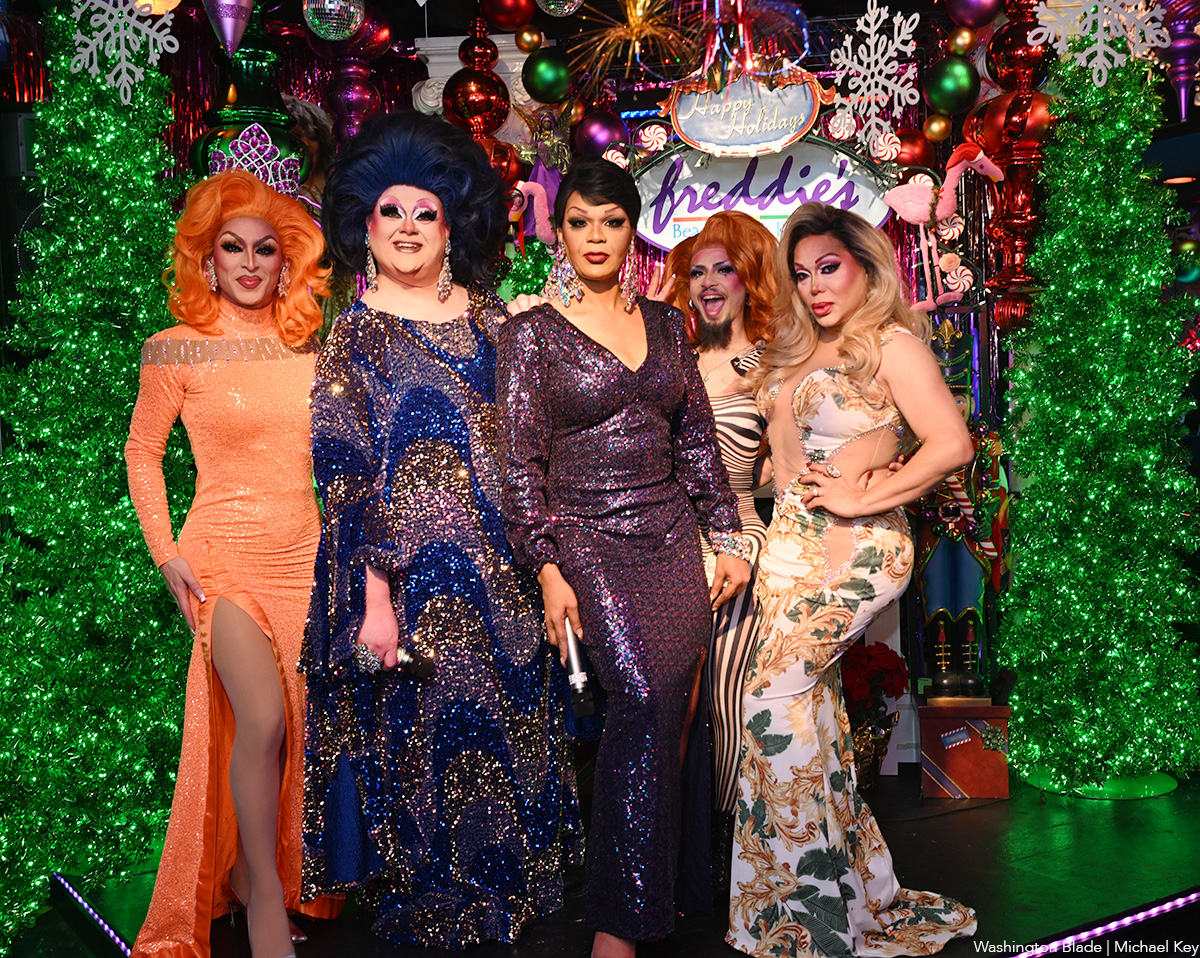
The Freddie’s Follies drag show was held at Freddie’s Beach Bar in Arlington, Va. on Saturday, Jan. 3. Performers included Monet Dupree, Michelle Livigne, Shirley Naytch, Gigi Paris Couture and Shenandoah.
(Washington Blade photos by Michael Key)

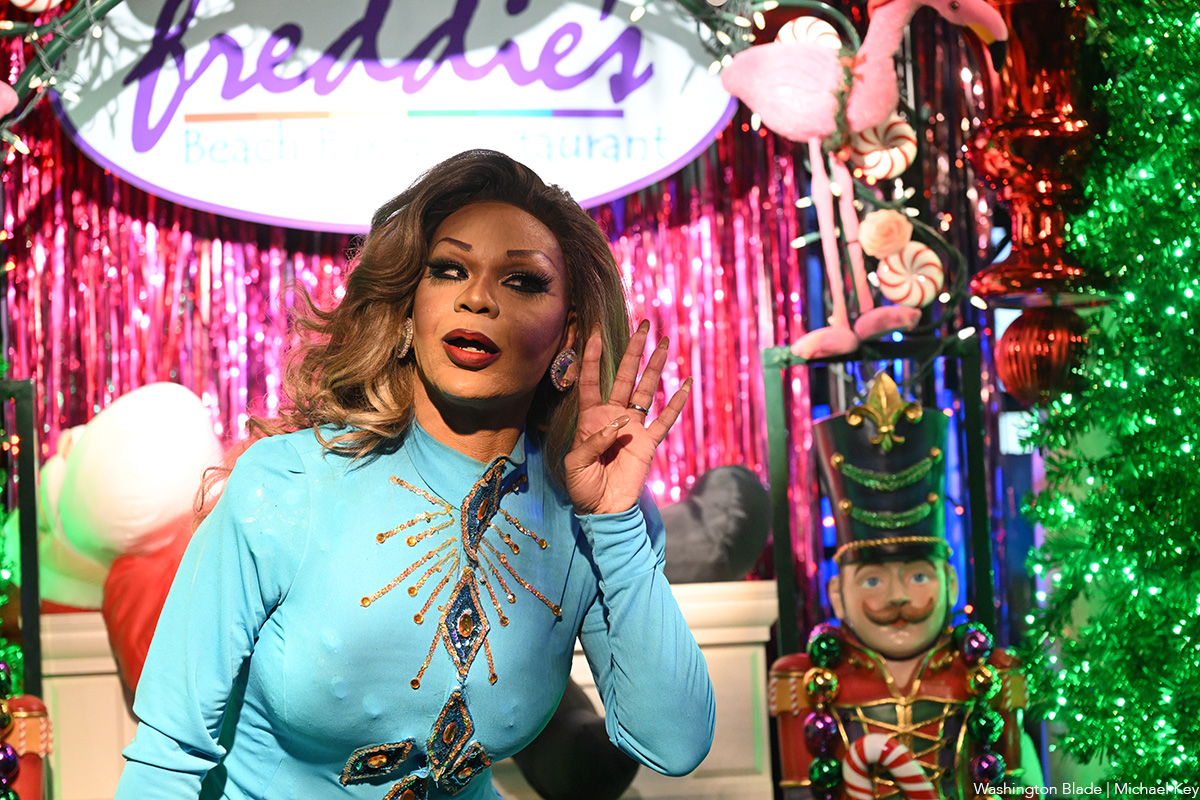





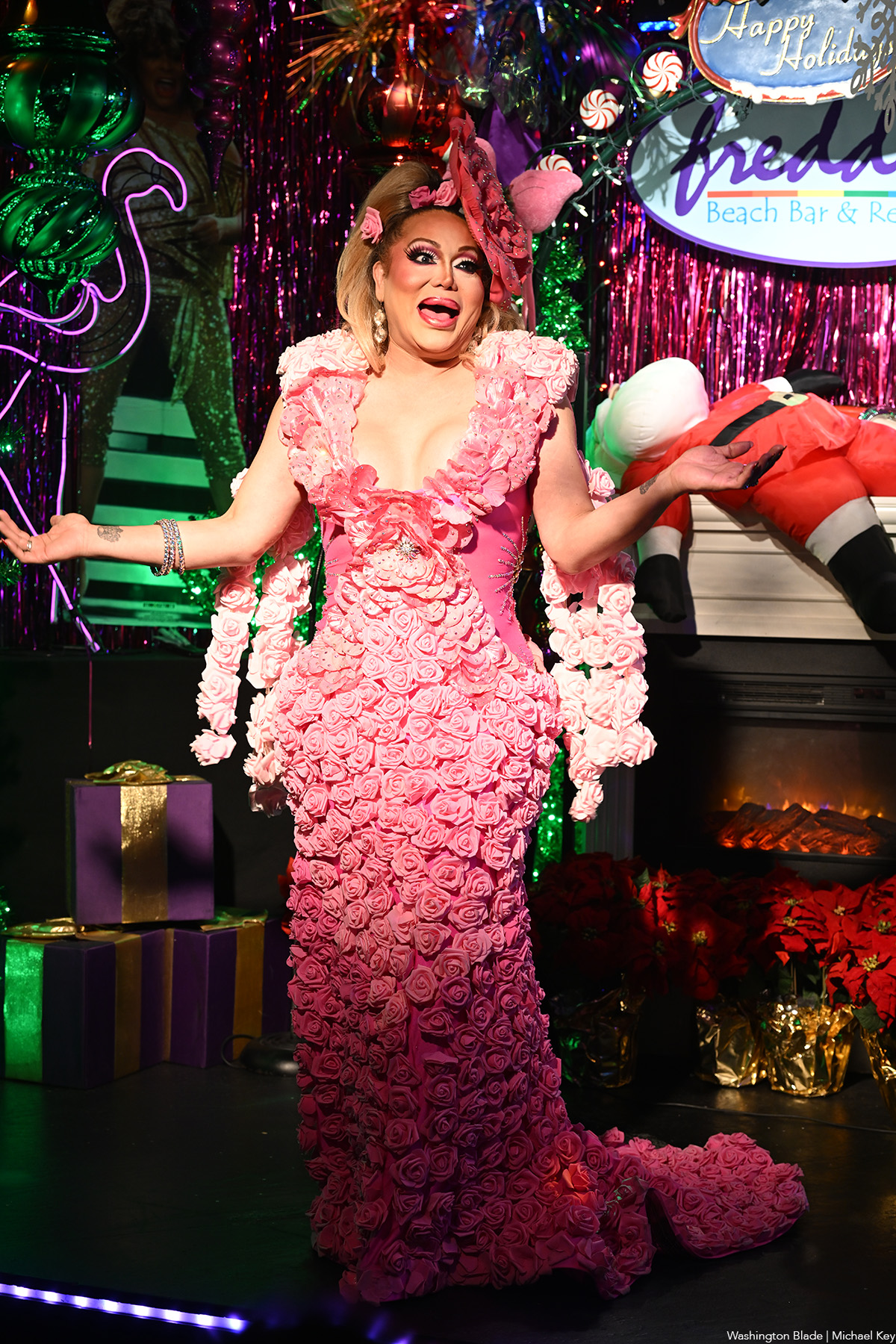
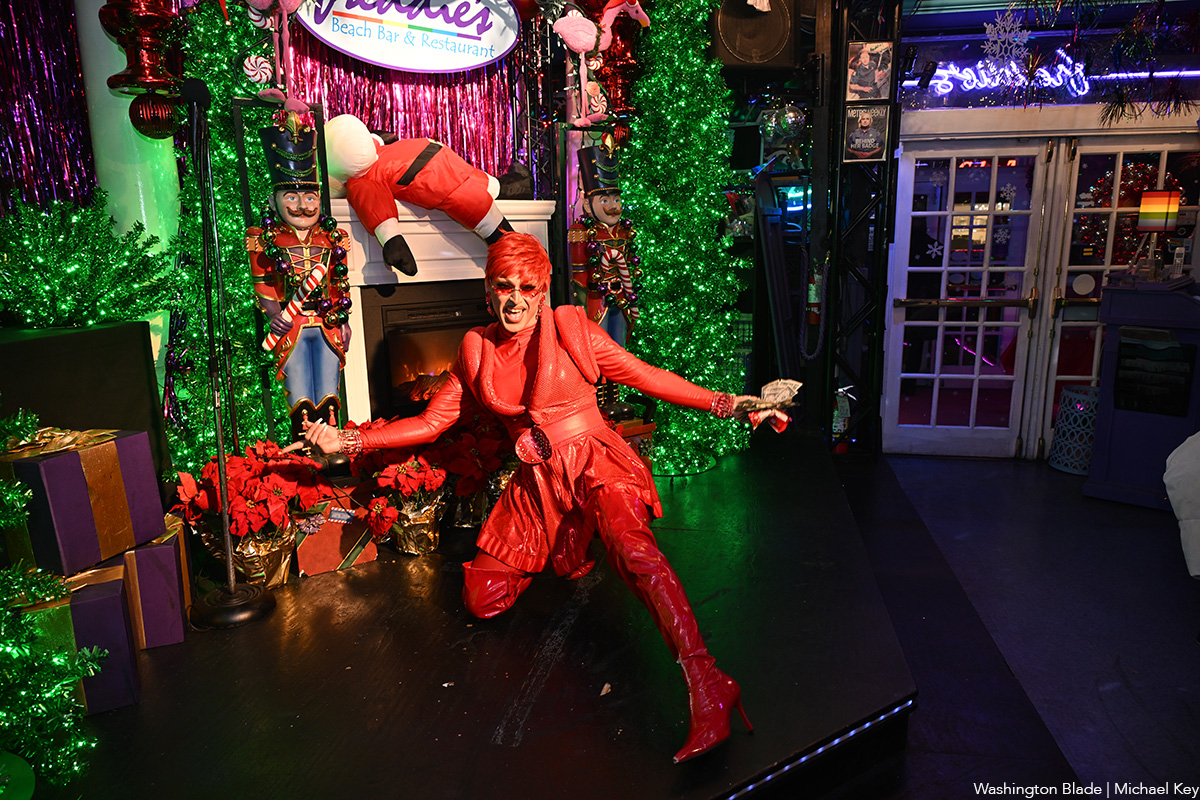

-

 Sponsored5 days ago
Sponsored5 days agoSafer Ways to Pay for Online Performances and Queer Events
-

 District of Columbia4 days ago
District of Columbia4 days agoTwo pioneering gay journalists to speak at Thursday event
-

 Colombia4 days ago
Colombia4 days agoBlade travels to Colombia after U.S. forces seize Maduro in Venezuela
-

 a&e features4 days ago
a&e features4 days agoQueer highlights of the 2026 Critics Choice Awards: Aunt Gladys, that ‘Heated Rivalry’ shoutout and more

